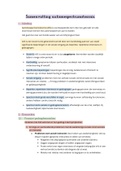College aantekeningen
Samenvatting videocolleges Entertainment Communicatie. Summary of the lectures of Entertainment Communication
- Vak
- Instelling
Dit document omvat alle videocolleges van Entertainment Communicatie gegeven door de docent Dr. Jeroen Lemmens. This document includes all video lectures of Entertainment Communication given by the lecturer Dr. Jeroen Lemmens.
[Meer zien]












